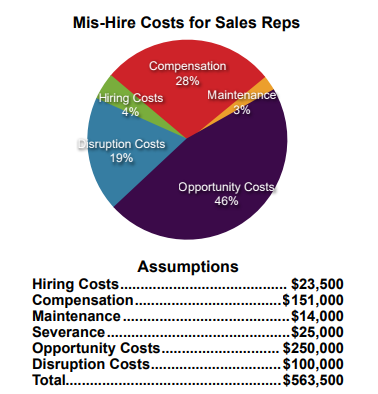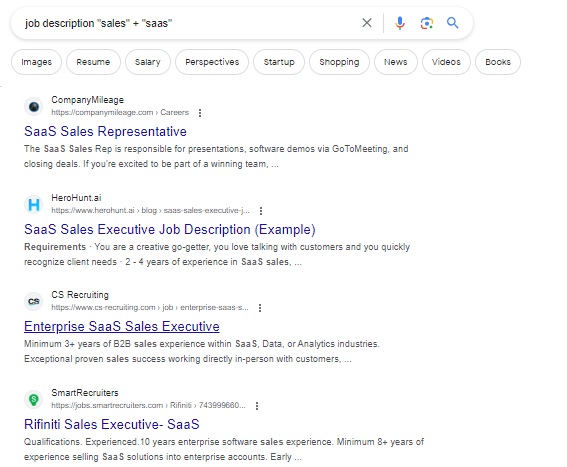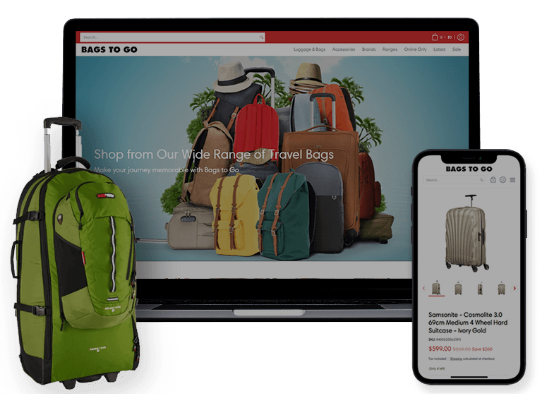take a In the intricate dance of building a successful organization, understanding the hiring process is akin to recognizing the intangible yet immense value of human capital in today's knowledge economy. It's a concept vividly illustrated by phenomena like the 'Bowie Bonds,' snapped up for over $50 million, and Dreamworks SKG's soaring $2.7 billion value, not for tangible assets, but for the visionary prowess of its founders.
Imagine standing at a crucial fork in the road of your business journey, where the choice of whom to hire could either propel your company to new heights or lead to a costly misstep. This is not an exaggeration, as falling into the trap of a hiring misadventure carries heavy consequences, echoing Dr. Brad Smart's stark warning. The cost of a mis-hire can be staggering, with estimates ranging from 6 to 27 times the actual salary of the position – a financial setback that can significantly impact your business.

In the traditional hiring process, decisions are often made in haste, based on outdated criteria or superficial impressions. Envision the hurried, back-to-back interviews, where the ability to charm might overshadow the absence of essential skills, leading to the all-too-common sighs of relief instead of cheers of triumph when a new, yet possibly mismatched, hire joins the team.
But what if we could transform this narrative? What if each hiring decision could be a strategic investment rather than a gamble? We are inspired to redefine the hiring process, moving away from the conventional, assembly-line approach, and aligning our methods with the visionary ethos of companies like Google and Apple. Here, employees are not mere workers but invaluable assets, pivotal in driving innovation and growth.
In this post, we'll delve into creating a hiring process that is not just effective but transformative in the modern business world. We will explore crafting job descriptions that echo your company's ethos and conducting interviews that truly assess a candidate’s critical thinking and cultural fit. Our goal is to establish a process that doesn’t just fill positions but adds real, lasting value to your organization, steering clear of costly hiring misadventures and setting the stage for genuine success.
Defining the Hiring Process
At its core, the hiring process is a systematic series of steps undertaken by an organization to attract, select, and onboard the right talent. This multifaceted process is crucial not just for filling current vacancies, but for strategically aligning new hires with the long-term goals and culture of the company.
Let's break down what this process typically entails:
- Identifying the Need: This initial stage involves recognizing the requirement for new personnel, whether it’s due to business growth, replacing a departing employee, or addressing a new organizational need.
- Creating a Job Description: A critical step where the role is clearly defined, including responsibilities, required qualifications, and the skills necessary for success in the position. This job description acts as the foundation for attracting suitable candidates.
- Sourcing Candidates: This involves actively seeking out potential candidates through various channels like job postings, recruitment agencies, social media, employee referrals, and talent scouting.
- Screening and Shortlisting: Applications are reviewed, and candidates are screened based on their qualifications, experience, and suitability for the role. This stage narrows down the applicant pool to a manageable number of potential candidates.
- Interviewing: Selected candidates are interviewed to assess their skills, cultural fit, and potential contribution to the organization. This step may involve multiple rounds of interviews, including behavioral assessments and practical tasks.
- Background and Reference Checks: Conducting thorough checks to verify the candidate’s background, work history, and references. This step is essential for confirming the accuracy of the information provided by the candidate.
- Job Offer and Negotiation: Once a suitable candidate is identified, a job offer is made, often followed by negotiations on terms of employment, such as salary, benefits, and other work conditions.
- Onboarding: The final step involves integrating the new hire into the organization, which includes orientation, training, and providing necessary resources to enable them to become a productive member of the team.
A well-structured hiring process is more than a sequence of steps; it's a reflection of the organization’s values and a significant determinant of its future success. By optimizing each phase of this process, businesses can not only attract the right talent but also lay a foundation for their sustained growth and development.
Traditional vs. Performance-Based Hiring
While the core stages of the hiring process remain consistent, the approach can vary significantly, especially when comparing traditional hiring methods with performance-based hiring. Understanding these differences is key to choosing a strategy that aligns with your organizational goals.
Traditional Hiring Process
- Focus on Credentials: Traditional hiring often emphasizes candidates' educational background, previous job titles, and years of experience.
- Standardized Interviews: Relies on a set of common interview questions that may not directly relate to the job's actual responsibilities.
- Subjective Decision-Making: Selections are frequently based on the interviewer’s personal impressions and biases.
- Job Description Centric: Job postings are typically a list of qualifications and duties, not necessarily tied to specific performance outcomes.
Performance-Based Hiring
- Outcome-Oriented: Performance-based hiring focuses on what candidates need to achieve in the role. Job descriptions are crafted around expected outcomes and performance objectives.
- Skill and Competency Assessment: This approach prioritizes a candidate’s ability to perform the job functions over formal qualifications. It involves practical assessments and realistic job previews.
- Structured, Relevant Interviews: Interviews are tailored to assess how a candidate's past experiences and skills align with the job's performance expectations.
- Data-Driven Decision Making: Uses objective metrics and standardized criteria to evaluate candidates, reducing unconscious biases.
The performance-based hiring process aligns more closely with the idea of adding value, as illustrated by the ‘Bowie Bonds’ we mentioned earlier. It seeks to quantify a candidate's potential contribution in tangible terms, akin to assessing an asset's value in the knowledge economy. This approach recognizes that a candidate's true worth goes beyond their resume, encompassing their ability to drive results and contribute to the organization's long-term success.
By distinguishing between these two approaches, companies can refine their hiring strategies to focus on what truly matters – not just filling a position, but investing in human capital that can propel the organization towards its strategic objectives.
Strategies to Transform Your Hiring Process
The key to transforming your hiring process lies in adopting a strategic and holistic approach that aligns with your organization's goals and culture. In today's rapidly evolving business landscape, refining the internal processes of hiring is crucial to effectively attract, assess, and onboard the right talent. This transformation involves a series of well-orchestrated internal steps, each contributing to a more efficient and successful hiring journey.
Let's take a deeper look into the steps and strategies necessary to redesign the internal hiring processes of your business. This exploration will focus on enhancing the internal methodologies and practices that form the backbone of your recruitment strategy, ensuring they align with the contemporary demands of talent acquisition and your business needs.
1. Identifying the Need in Your Hiring Process
In the hiring process, identifying the need for new personnel is a critical first step. It requires a nuanced approach, balancing immediate requirements with long-term strategic goals.
This phase involves several key activities:
Activity 1: Comprehensive Organizational Analysis
- Evaluate areas of business growth and sectors experiencing change.
- Analyze how these changes align with long-term business strategies.
- Identify roles crucial for future growth.
- Look for departments showing signs of being understaffed.
- Assess the impact of current market trends on staffing needs.
Activity 2: Establishing a Multifaceted Hiring Committee
- Include HR professionals, department heads, and where relevant, members of upper management.
- Ensure diverse representation for balanced perspectives.
Activity 3: In-Depth Interactions with Internal Teams
- Engage with department managers for detailed discussions on skill requirements.
- Include direct team members to understand day-to-day dynamics and role specifics.
- Gather insights on workload distribution and team performance metrics.
Activity 4: Reflecting on Cultural Fit and Evolution
- Consider how potential candidates will align with and contribute to the company culture.
- Project the company’s future direction and the evolving roles that will support this journey.
Activity 5: Differentiating Role Requirements
- Determine if a departing employee's role requires a direct replacement or a strategic realignment.
- Define new positions in the context of the existing organizational structure.
Activity 6: External Stakeholder Consultation
- Sometimes valuable insights can be gained from clients, industry partners, or external advisors.
By incorporating these varied elements into the initial phase of the hiring process, your organization ensures a thorough and strategic approach to talent acquisition. This method not only addresses immediate needs but also positions your company for future success through thoughtful team building and strategic foresight.
2. Refining Job Descriptions
Creating a job description is akin to drafting a blueprint for the ideal candidate, a foundation upon which the entire hiring process is built. To transform a standard list of qualifications into a dynamic narrative, it's essential to first understand the essence and impact of the role within the organization. This involves not just detailing the responsibilities and required skills, but also weaving in how the role aligns with the company's mission and vision, and the growth opportunities it presents.
If you're constructing a job description for the first time and lack a dedicated HR expert, a practical start is to research existing job descriptions online. You can use a search engine like Google and search for the appropriate parameters or just visit a job board like Indeed.com or Monster.com and search a role. This can provide a framework, but remember, your goal is to tailor this information to reflect the unique aspects of your organization and the specific role.

As part of of tailoring the information to your organization, you'll want to analyze the role based on your organization's business plan and its evolution. Consider what skills and experiences are needed now, as well as what might be required in the future. This approach ensures that the job description is relevant and forward-thinking.
You'll also need to engage key stakeholders which means identifying who needs to be involved in defining the role. This could include:
- Board members
- Senior executives
- And occasionally, in rare cases, peers or subordinates.
The aim is to avoid a diluted description that tries to satisfy everyone's needs superficially. Instead, focus on the specifics that truly encapsulate the essence of the role.
Part of this process is acknowledging the specific challenges your industry faces. Understand where your company stands in its life cycle, whether as a start-up or a multinational, and how this position influences the skills and experiences required. Conduct a SWOT analysis to gain a clear understanding of your business's current state and how this new role fits into the larger picture. It’s important to avoid trendy job descriptions that might seem appealing but don’t align with your actual needs.
Consider the role's impact on other positions and how it might bolster weaknesses in your management team. Ensure the job description reflects how this new position will smoothly integrate into your existing organizational structure.
In detailing the job description
- Start with a clear goal in mind for the role.
- Define specific activities and expectations.
- Determine if it's a new or existing job, and specify any overlaps with other roles.
- Describe the leadership style needed and the level of authority.
- Establish observable and measurable performance requirements.
- List both hard and soft skills, and prioritize industry knowledge or contacts as necessary.
- Define essential personal qualities and the desired management style.
Involve your team in updating the job description. Their insights on what strengths, skills, and types of personalities have succeeded in the past can offer invaluable perspectives. They can also provide feedback on past hiring experiences, highlighting both successes and areas for improvement.
Finally, set clear timelines and metrics for the role. Determine the training period, how progress will be measured, and contemplate the options for addressing performance issues. Think about where you want the position to be a year from now, setting goals that align with both the individual's growth and the company's objectives.
A well-crafted job description is the cornerstone of the hiring process. It's not just about finding someone with the right qualifications; it's about finding someone who will thrive in your unique corporate environment and contribute significantly to your long-term goals. This requires attention to detail, clear communication, and an understanding of your organization's culture and needs.
3. Candidate Sourcing to Capture A-Plus Talent
In the quest for the perfect candidate in today’s competitive job market, innovative sourcing strategies are crucial. This isn't just about reaching a larger audience; it's about connecting with the right individuals in spaces where they're most engaged and receptive.
Let's dive into the myriad of ways to creatively and effectively expand your talent search horizons.
- Leverage Social Media Platforms: Social media is an invaluable resource for potential candidates. Beyond LinkedIn, platforms like Twitter, Facebook, and Instagram offer unique insights into a candidate's personality and professional interests. Engage potential candidates with content that reflects your company's culture and the exciting opportunities you offer. Utilize targeted ads to reach specific demographics, tapping into a pool of talent that aligns with your company's ethos and needs.
- Employee Referral Programs: Your existing employees can be a treasure trove of recruitment potential. They have a deep understanding of your company culture and the qualities that make someone successful in your environment. Create a robust employee referral program, offering incentives to encourage your team to recommend skilled professionals from their networks. This approach can uncover candidates who may not be actively seeking new opportunities but are ideal fits for your organization.
- Networking and Industry Events: Digital and physical spaces where professionals gather are ripe with opportunity. Webinars, conferences, and industry events are not just about staying abreast of the latest trends; they're also platforms for meeting potential candidates. Active participation in these events positions your company as a key player in the industry and builds relationships with professionals who might be the perfect fit for future openings.
- Collaborations with Educational Institutions: Developing partnerships with universities and vocational schools can be a gateway to fresh talent. Engaging with students through internships or cooperative education programs can create a talent pipeline that benefits both your company and the students. These relationships often lead to full-time opportunities for graduates who are already familiar with your company and its culture.
-
Utilizing Niche Job Boards and Forums: To reach professionals deeply invested in their fields, explore niche job boards or professional forums specific to your industry. These platforms often attract individuals who are not only skilled but passionate about their work. Some examples include:
- Stack Overflow: Ideal for tech and programming roles.
- Behance: Perfect for creative and design professionals.
- Medzilla: Great for healthcare and pharmaceutical industries.
- Talent Scouting and Headhunting: For specialized or high-level positions, proactive talent scouting or headhunting can be highly effective. This approach involves identifying and reaching out to individuals with the desired skills and experience, regardless of their current employment status.
- Community Engagement and CSR Initiatives: Active participation in community events and CSR initiatives can significantly enhance your employer brand. This strategy is particularly effective in attracting candidates who value corporate social responsibility and are looking to work for companies that contribute positively to society.
- Exploring Alternative Talent Pools: Broaden your search to include unconventional talent pools. This includes individuals returning to work after a career break, veterans, retirees who bring a wealth of experience, or professionals from other industries seeking a career change. These candidates can offer diverse perspectives and experiences, enriching your organization's talent mosaic.
- Embracing Remote and Global Talent: The rise of remote work has dramatically expanded the available talent pool. Consider candidates from various geographical locations, especially for roles that can be performed remotely. This approach not only widens your talent search but also introduces diverse cultural perspectives into your organization.
By adopting these varied and innovative sourcing strategies, you're not just filling positions; you're strategically enhancing your workforce. This approach requires thinking outside traditional recruitment paradigms, embracing technology, and understanding the evolving dynamics of the modern workforce. With creativity and strategic planning, you can uncover a wealth of talent that can propel your organization towards new heights of success.
4. Enhancing the Screening and Shortlisting Process
The screening and shortlisting phase is a critical juncture in the hiring process, where the broad spectrum of candidates begins to be distilled into a select group aligned with the role's requirements and your organization's ethos. This stage blends precision in candidate evaluation with a profound understanding of what makes an individual the right fit for your organization.
In our digital age, leveraging innovative technologies can significantly refine the screening process. A few tools to consider:
- Applicant Tracking Systems (ATS): These are invaluable for automating the initial sorting of applications, filtering candidates based on specific criteria such as keywords, skills, and educational background.
- AI-Powered Analysis Tools: These tools go beyond traditional parameters, analyzing resumes and applications for nuances in work history and responses to predict a candidate's potential success in the role.
- Technical Skill Assessment Platforms: Particularly useful for roles with defined technical requirements, these platforms allow for an early assessment of the necessary skills, saving time and resources in the later stages of hiring.
- Video Interviewing Platforms: These tools allow candidates to answer preset interview questions via recorded video, giving a firsthand glimpse of their communication skills and personality.
- Behavioral Analytics Software: This technology analyzes subtle cues in candidate responses and behavior during video interviews or assessments to gauge their suitability for the role.
After integrating these technologies, it's essential to establish a comprehensive screening framework which can be done by:
- Identifying Key Criteria: Begin by defining the non-negotiable qualifications, skills, and experiences required for the role. This forms the baseline for all candidate evaluations.
- Developing Evaluation Standards: Determine the ideal candidate profile, taking into account their professional trajectory and potential for future growth within your organization.
- Ensuring Regular Updates: Keep the framework dynamic by regularly updating it to reflect the latest industry trends and changes within your company.
As part of the screening process, integrating a character and locus of control evaluation adds depth to your candidate assessment and will help you evaluate soft skills and overall cultural fit.
- Use behavioral questions, personality assessments, and Situational Judgement Tests (SJTs) to assess problem-solving skills, adaptability, and alignment with company culture.
- Analyze how candidates have grown through their career and how they contributed to their previous organizations, their decision-making style, and how they’ve navigated past professional challenges as well as embraced new opportunities.
- Go beyond the candidate's words to understand the underlying motivations and character traits. Pay attention to nuances and read between the lines to gauge their internal locus of control.
You'll also want to be able to gauge the candidate's accomplishments and potential for growth which can be done by focusing on the candidates' adaptability, resilience, and decision-making. You do this by doing the following:
- Examine how they adapted to changes and overcame challenges.
- Analyze the reasoning behind their career moves and the progression they've made.
- Assess their clarity in understanding situations and focus on execution.
Early in the interview, aim to discern both pain and gain factors to help you identify the candidate's motivational factors for applying for the specific position in question. Inquire about:
- Pain Factors: Inquire about aspects of their current role where they feel dissatisfied.
- Gain Factors: Find out what attracted them to your opportunity and what aspects of the role they find appealing.
Finally, you'll want to engage in pre-interview questions where you have direct communication through phone or video calls, allowing for a deeper understanding of the candidate's background, motivations, and suitability for the role.
A few types of questions to ask:
- Problem-Solving: “Describe a situation where you had to solve a difficult problem at work.”
- Adaptability: “Tell me about a time when you had to adjust to a significant change.”
- Collaboration: "Provide an example of a successful team project you were a part of."
By meticulously integrating technology with this strategic screening framework and paying close attention to both the tangible and intangible qualities of candidates, this process becomes more than just an elimination round. It evolves into a nuanced assessment, aligning the most suitable candidates with the specific demands of the role and the broader culture of your company. This detailed and thoughtful approach paves the way for a more streamlined and effective hiring process.


.jpg)